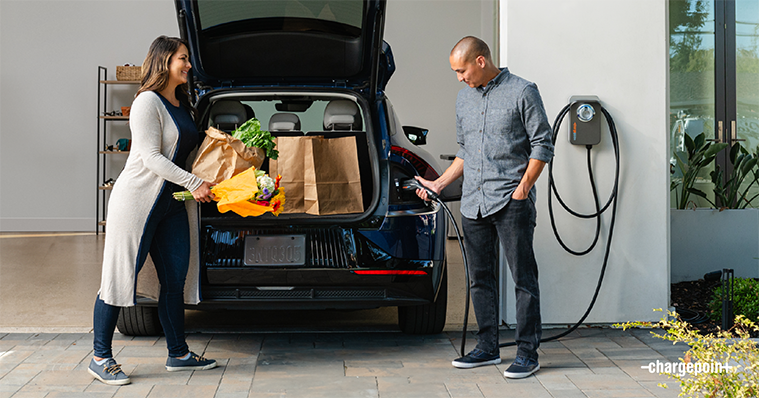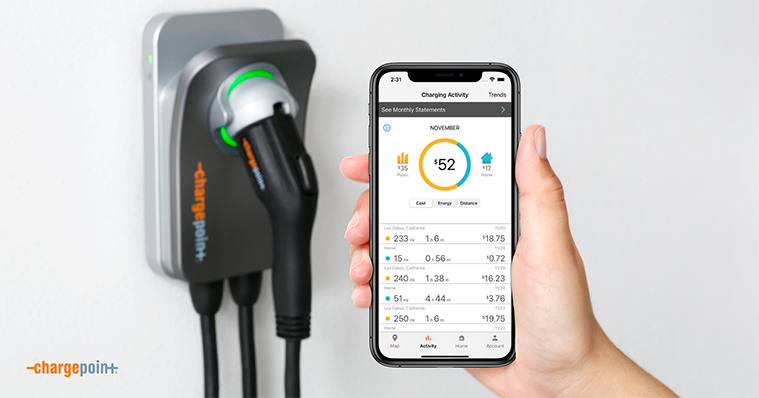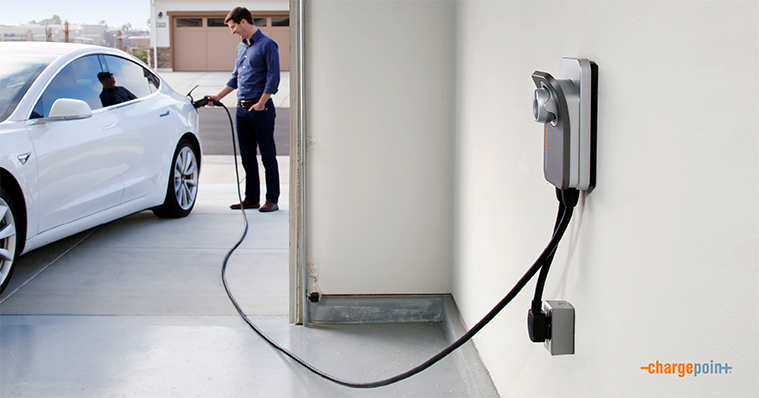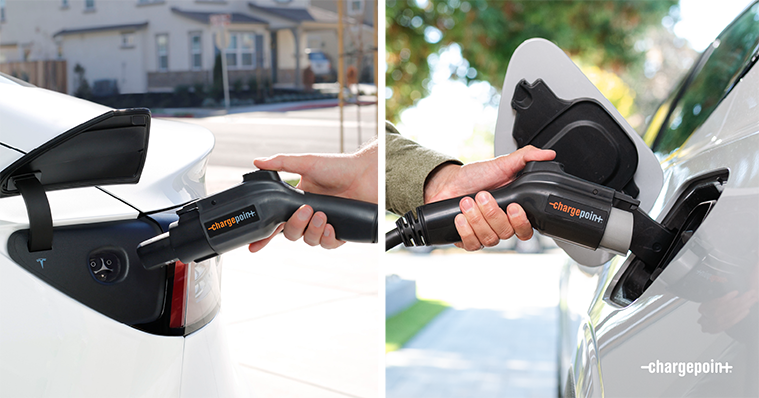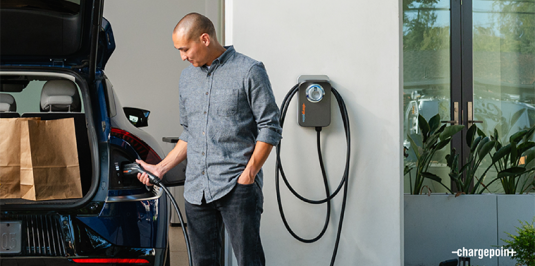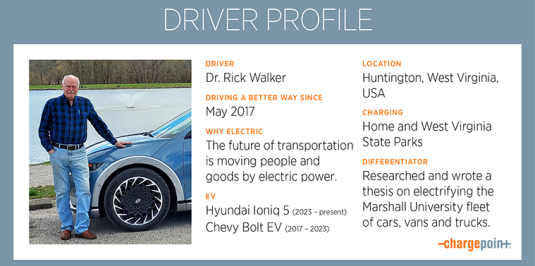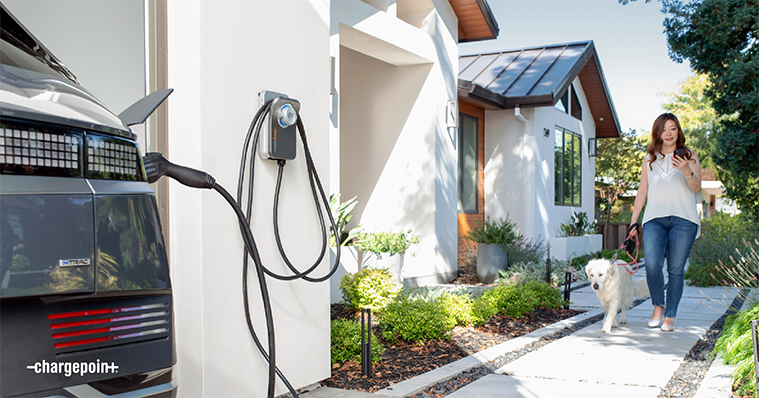
Perhaps you’ve noticed it, too. The electric buzz in the air. The steady rise of EVs around you, whether you’re cruising to work or on a family road trip. It’s no surprise that 2024 is shaping up to be another banner year for EV ownership as drivers worldwide switch to a better way to drive and live. In fact, the EV revolution is expected to eliminate the need for 5 million barrels of oil a day by 2030. Can you imagine? We’re here for it. But naturally, many new and prospective EV drivers have many questions about this exciting technology and way of life, including wanting to understand if investing in a home EV charger is right for them. Myths about home charging and installation abound, so let’s tackle a few pesky rumors and help you get up to speed on the life-changing convenience of home charging.
Myth #1: Charging your EV at home is slow
Charging your EV at home is NOT slow unless you want it to be. Like all aspects of your EV lifestyle, the choice is yours. EVs come with a Level 1 home charger you simply plug into your existing wall outlet. Level 1 chargers are great for emergencies or if you’re not in a rush, but they only add four miles of range to your EV per hour of charging. That’s why many EV drivers invest in a Level 2 home charger. ChargePoint Home Flex, for example, charges up to nine times faster and delivers up to 37 miles of range to your EV per charging hour. Your EV will be juiced up and ready to go long before you’re even awake and drinking your morning coffee.
Myth #2: Charging your EV at home is expensive
Charging your EV at home is NOT expensive. In fact, switching to an EV saves drivers almost $1,000 a year on fuel costs alone. That’s not even including maintenance and repairs, which are cheaper for EVs than old-fashioned internal combustion engine (ICE) vehicles. All EV drivers can stick with their included Level 1 charger to charge at home or easily charge around town with apps like the ChargePoint driver app. Installing a smart home charger like ChargePoint Home Flex can help EV drivers save even more money over the years. By enabling drivers to charge automatically when electricity rates are most affordable, smart chargers save additional money. Smart chargers like Home Flex are also eligible for numerous federal, state and local tax incentives and rebates for even sweeter savings. Chef’s kiss to all the ways you can save by switching to an EV and charging at home.
P.S. Curious how much you’ll save by going electric? Play with the ChargePoint EV savings calculator to determine your potential baseline EV savings.
Myth #3: You need to install an expensive, hardwired EV charger to charge your EV at home
You do NOT need to install an expensive, hardwired EV charger to charge your EV at home. First, you can always go with the Level 1 charger included with your EV. Second, many home chargers come in nonhardwired options. For example, ChargePoint Home Flex comes in two nonhardwired configurations, the NEMA 6-50 Plug and the NEMA 14-50 Plug, that can plug into an existing wall outlet. The only difference between the two is which type of plug receptacle they work with, so all you need to do is determine which type of outlet you have at home. For what it’s worth, hardwired EV chargers can be less expensive to purchase, and installation with an electrician is a one-time cost that pays dividends in the long term. And then you’re on your way, charging forward to save for what’s next.
Myth #4: Level 2 home chargers don’t add much value
Level 2 home chargers add tremendous value to EV drivers and their EV lifestyles. A smart Level 2 home charger like ChargePoint Home Flex delivers unparalleled speed, intelligence and flexibility to EV drivers. First, a Level 2 home charger will enable drivers to charge their EVs even faster, saving time. Second, a smart Level 2 home charger like Home Flex works with the tech that drivers already use daily. Want to start charging your EV with your Amazon Alexa for maximum convenience? How about tracking and controlling your private and public charging in a single app? Or scheduling charging to save even more money? A smart charger can do it all. For example, ChargePoint Home Flex is designed to adapt with you, working with any EV and allowing you to decide how much power you want delivered to your vehicle. We could go on about how Level 2 home chargers — especially smart Level 2 home chargers — help EV drivers charge, drive and live even better.
P.S. Another added benefit of having a Level 2 charger at home is the ability to preheat or precool your EV while it's plugged in so you get into a comfortable car without draining the battery. You can even do it in the garage because there are no exhaust fumes.
Myth #5: You need a specific EV charging cable for each type of EV
You do NOT need a specific EV charging cable for each type of EV. While car manufacturers use different connector types in North America, such as the J1772 and NACS (Tesla), most home chargers work with adapters to charge any EV easily, regardless of its connector type. For example, a Tesla driver has an EV with a NACS connector. Many Tesla drivers choose to charge at home with ChargePoint Home Flex. If you're a Tesla driver, you have multiple choices for how to charge their EV with ChargePoint Home Flex:
- Use the NACS adaptor that came with their Tesla to continue charging with your existing Home Flex.
- Invest in a ChargePoint NACS cable conversion kit to streamline your current Home Flex.
- Select a new Home Flex station with a built-in NACS vehicle connection type.
Bottom line: Your home charging station should adapt to your EV lifestyle, regardless of what type of EV you drive.
Myth #6: Installing a home charger is really expensive
Installing a home charger does NOT need to break the bank. First, not all home EV chargers must be installed by an electrician. Many EV drivers choose a plug-in station that can easily plug into an existing wall outlet. But remember that while Level 1 home chargers can plug into an existing 120V wall outlet, Level 2 chargers need a 240V outlet. Second, the cost of installing a home charger depends on several factors, including your station’s home connection type, installation setting, and electrical panel capacity and location. A general rule is that the farther you install your charger from your electrical panel, the more expensive the installation will be. According to Qmerit, installing a home charger ranges approximately from $800 to $2,000. While this wide range is a real investment, the upfront, one-time cost of installing a home charger is nothing compared with the potentially tens of thousands of dollars drivers will save by going electric over the lifetime of their EV. Not to mention, you will literally have a fuel pump in your home that conveniently dispenses fuel for your car at a 50% to 75% discount. Last, you can deduct a significant portion of the costs of a home charger on your federal taxes, including installation and other costs, depending on where you live. As we like to say: Install once, charge always.
P.S. Even if your electrical panel is older, you may not need to replace it because:
- You can set a smart charger like ChargePoint Home Flex to a lower amperage if you have an older panel or have limited capacity.
- Your electrician may also be able to repurpose an existing circuit, setting the amperage to match.
- Even if there are no spaces in your panel, a tandem breaker can replace two existing breakers, adding the 240V circuit for the charge.
Myth #7: I can’t install a home charger myself
You absolutely CAN install a plug-in home charger yourself if you have the right existing outlets. However, calling an electrician is always the right thing to do for your home, EV and peace of mind under a few circumstances:
- If you need a new outlet type installed for a plug-in home charger
- If you need to add capacity to your electrical panel
Repeat after us: Install once, charge always. It’s really true. And if you need a licensed electrician for a new outlet, a hardwired station or more electrical capacity, it’s really easy to find a certified installer who won’t break the bank with ChargePoint partners.
Here’s to clearing up a few common home charging and installation myths and misunderstandings. At ChargePoint, we’re always here to welcome people to the EV revolution and ensure they can charge however they choose. The truth is that once you experience the speed, smarts and convenience of home charging, you’ll never look back.

